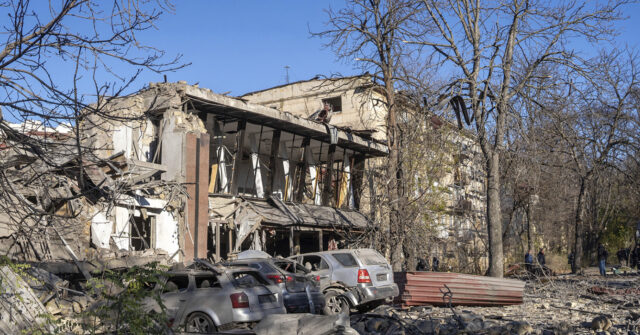The ongoing conflict between Ukraine and Russia continues to escalate, with both nations making claims regarding their military strikes and the targeting of civilian infrastructure. Ukraine asserts that its armed forces successfully targeted a significant weapons plant known as the ‘Typhoon’ factory located in Kaluga Oblast, Western Russia, which plays a critical role in the Russian military-industrial complex. As detailed by Andriy Kovalenko from Ukraine’s National Security and Defense Council, the facility is involved in developing and manufacturing military electronic equipment, air defense systems, and missile components. Alongside this, Ukraine reports having struck an oil refinery depot in the same region, which is part of a broader operation targeting resources that contribute to Russia’s military capabilities.
In the midst of these developments, Ukraine claims to have targeted multiple sites in Russian regions such as Bryansk, Kaluga, and Kursk, with Ukrainian media attributing the drone strikes to its Main Directorate of Intelligence. However, Russia counters that these attacks have not caused significant damage, asserting that its air defenses successfully intercepted most of the drones, claiming any resultant fires were merely due to falling debris. Concurrently, Ukraine describes a series of Russian strikes across its own territory, with President Volodymyr Zelensky reporting an extensive barrage involving nearly 150 UAVs, aerial bombs, and missiles aimed at various regions, leading to injuries among civilians, including children.
The exchanges of military strikes highlight the ongoing tit-for-tat nature of the conflict, with Ukraine confirming retaliatory actions against military targets in the border region of Belgorod and inflicting damage, including fatalities. Russian officials reported numerous intercepts of Ukrainian projectiles but alleged that at least one drone strike resulted in a death when it reportedly targeted an ambulance marked with the Red Cross. The Russian claim of a Ukrainian war crime—attacking a medical vehicle—lacks corroborative evidence but reflects the growing tensions and accusations exchanged between the two sides.
Moscow’s statements reiterate its focus on depleting Ukraine’s military capabilities, emphasizing the targeting of Ukrainian military airfields and energy infrastructure essential for wartime operations. The debilitating impacts of these strikes are particularly pertinent as winter approaches, compelling both nations to adapt their strategies amid the complexities introduced by seasonal changes. The Russian Ministry of Defence cites significant impacts on infrastructure across multiple Ukrainian districts, indicating a systematic approach to undermine Ukraine’s military endeavors.
As the conflict has progressed into its third year, a shift in battlefield dynamics has been observed. Analysts note that 2024 has seen an increase in mobility in combat operations compared to the previous year, characterized by Ukrainian losses in territorial control. However, British intelligence reports acknowledge Ukraine’s innovative approach to drone warfare, enabling strategic strikes deep into Russian territory, evidenced by notable attacks on critical Russian ammunition depots. This success points to an apparent weakness in Russian defenses and highlights the evolving nature of the conflict, wherein innovative military strategies play a crucial role.
Overall, the enduring conflict remains defined by a cycle of strikes and counter-strikes, framed within claims of military success and accusations related to civilian casualties. The toll of this war is reflected not only in terms of territorial control but also in the humanitarian crisis that ensues as both governments seek to assert their narratives amid the chaos. As both sides continue to exchange blows, the ramifications on both military capability and civilian life grow, underscoring the conflict’s complexity and the urgent necessity for a lasting resolution.

